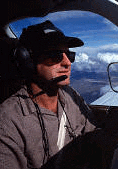 | 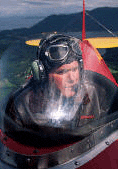 | 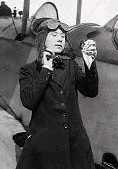 | 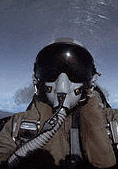 | 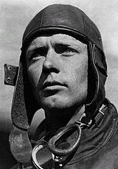 | 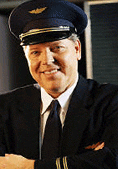 |
For many flying is a lifetime adventure. It's a multidimensional activity that you can enjoy on as many levels as suits your fancy from sightseeing to aircraft appreciation to aerobatics to travel to technical flying to history to earning a living and on and on. Along the way, you meet some great people and learn a bit about yourself along the way. And best of all, you can do it!
Here is the basic scoop on becoming a pilot, in plain English.
Medical
To become a pilot, you don't have to be in great shape or have superior hand-eye coordination. For private pilot privileges, you will have to, at some point, pass an FAA medical exam, but for most this is little problem if you don't have a known heart condition and your vision is reasonably good or can be corrected (with glasses or contacts) to be good (not necessarily perfect). If you have concerns, see a doctor first. Here's a list of aviation medical examiners.
Which Certificate?
The goal for most people is a Private Pilot Certificate, which comes in several flavors, depending on which type of aircraft you train in. For most people,. this means airplanes, though others become private pilots in helicopters, gliders, balloons, and so forth. A "recreational pilot" certificate is also a possibility, but in practice this certificate (we don't say "license") has had few takers. In 2003/4 there has been considerable talk of a "Sport Pilot" certificate that will let people fly small 2-seat aircraft with less training than required for the Private Pilot certificate, but whether this will become a) a reality and b) popular is yet to be seen.
With a private pilot certificate, you can fly in good weather and see some neat stuff. As your experience grows, when you go on holiday, for example, you can rent airplanes and take friends or family to see the sights in a whole new way. If you so choose, you can then train on bigger and faster aircraft. Who knows--you might even consider buying a plane.
 | Postcard? No - it's a snapshot from my recent weekend trip! |
Aircraft?
The aircraft (airplanes) that you fly as a student pilot are typically 2- and 4- seat affairs that look like so:
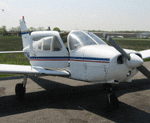 | 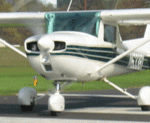 |
When properly maintained (as the vast majority of active training aircraft are), flying in them is safe and fun. As you gain experience, you gradually move into faster and more exotic aircraft.
Two Categories of Flight Training Organizations
Flying under the US Federal Aviation Administration (FAA) framework basically happens in two guises, named after the section of the Federal Aviation Regulations (CFR 14) under which they are regulated.
|
In practice, both types of schools produce pilots that statistically are equivalently safe and an airline pilot in practice is as likely to come from a Part 61 background as he is from a Part 141.
You will not be seen as a better or more serious pilot or potential employee by anybody because you got your certificate through one type of school or the other, and any kind of chauvinism on this front is silly and misguided. Why do we bring this distinction up in this beginning text then? Because if you go to your local airport you might hear some talk of this and not quite know what to make of it. The real key in terms of choosing where to train is to ...
Find a Good Instructor
Your local airport most likely has one or more training outlets. These can be a flight school (part 141 or not), FBO ("fixed based operator"), or maybe just some independent instructors. The best thing you can do before you start your training is to canvass maybe a handful of potential schools to find a good fit. Ideally, you'd be flying with a single instructor for the bulk of your training, so you'd like to find one that you feel comfortable with. Experience counts, yes, but this doesn't mean that you should discount an enthusiastic fresh instructor.
Minimum Flight Hours
When training under either Part 61 or Part 141, there is an FAA mandated minimum number of flight hours required of around 40. You can, for all practical purposes, ignore this, as very few people finish at near the minimums, and people occasionally view those who do with some suspicion. The fact of the matter is that today's pilot needs to know and be able to do many things that it's nearly impossible to finish in the minimum, though a conscientious student that works hard independently and trains relatively frequently (2-3 times a week) can certainly keep his/her costs down. The national average number of hours for getting a Private Pilot certificate is around 55-65.
Costs
At the time of this writing, it costs approximately $80-$150 per hour to rent an airplane. This includes the fuel and oil, and the time is only counted when the engine is on (so one hour really means one hour). Instructor rates typically vary from $25 - $65 per hour -- some places link this to the engine time, and some count all the clock time that you are with the instructor in making this determination.
60 hours x ($100 + $35) = $8100
Add another $1000 - $1500 for things that you'll have to buy along the way (like a headset), and you have a pretty rough idea of what it costs. Helicopters cost more. Is it a lot of money? Yes. Is it worth it? We think you know our answer!
Introductory Flight
Most or all flight training organizations will gladly offer you a demo flight for an introductory flight price. A demo flight can be a half an hour of just going up, getting a sense for what being in a small airplane is like. On your very first flight, the instructor is likely to let you have the controls (with him/her keeping a close watch, of course).
How hard is it?
Every student that we have ever had the privilege to introduce to the world of flying has bar none at some point told us that flying was easier than they had anticipated. Our reply, and the closest thing that we can say that approximates sage advice with regards to flying is this:
"Nothing about flying is hard, except mastering the thousands of necessary easy things."
Like anything worth doing, learning to fly takes some diligence and effort, but it can be done by most people from age 16 to 106.
The Timeline
The following timeline is written with airplanes in mind, and varies slightly for helicopters and other aircraft types. If you schedule 3 lessons a week, you're likely to fly 2 a week (because of weather and other issues), and will earn a Private Pilot certificate in 3-6 months. Each flying lesson will likely include between 1 and 1.5 hours of flying, though the "cross country" flights (flights that go 50 or more miles from your local airport) that you will do as part of your training will be a bit longer. Each flight lesson will generally contain a pre-flight and a post-flight briefing and discussion with your instructor, so figure on 3-3.5 hours as a conservative "car to car" benchmark.
The goal is to pass a combination flight and oral test, known as a "checkride" with an FAA Designated Examiner.
To be eligible to take a checkride, you must meet certain aeronautical experience requirements and have completed your written (knowledge) test. Our GroundSchool software is, in our highly biased opinion, the best choice for studying for your written test. To learn more about the written test and/or our software, click here.
Much of your flying time will be spent on preparing for things that you will be tested on during your checkride. This includes standard maneuvers and procedures that you will have to fly. All of the maneuvers and requirements are standardized in a series of publications called the Practical Test Standards. You can find links to the practical test standards on our website.
Solo Flight!
Part of the aeronautical experience requirements includes some solo flight. That's right--no instructor. Just you, an airplane, and the wild blue yonder. Of course, this is an exhilarating and anxious event, but people have safe first solos every day. Someday soon, maybe that could include you.
Talking about "average" times to solo is misleading and counterproductive. Unfortunately, occasionally students seem to think that getting to solo is some sort of race. In practice, if you ever hear somebody bragging about how few hours they soloed in, then you can almost be certain that they are only revealing their own lack of experience. Amongst experienced pilots, its understood that this number means absolutely nothing. The famous WW2 ace Chuck Yeager who broke the sound barrier in the Bell X-1 aircraft took an inordinately long amount of time to solo. After our students are ready to solo, we generally fly another 5 hours or so with them AND have them fly with another instructor just to be super-super sure that everything is on the up-and-up. That all said, many people solo in between their 20th and 35th hours, so it can be generally said that it occurs about halfway through the training. Here's our attempt at humor with regards to the number of hours it takes to solo.
For airplanes, you will learn at least the following maneuvers and procedures during your training: normal takeoffs and landings, slow flight, stalls, turns, ground reference maneuvers, cross country planning and navigation, use of radios, use of navigational equipment, emergency procedures, aviation weather, aviation psychology and physiology, aircraft systems, aerodynamics, regulations, and more.
You may be apprehensive about some of this training regimen until you actually do it and see that its really not that bad, and is intended to keep you safe! Everything that you will be taught has the goal of making you a safe and competent pilot. Safety is the watchword of aviation and is priority one.
Conclusions
We hope that we have provided you with a reasonable introduction to flying. To get more specifics, go down and visit the nice folks at your local airport - I'm sure they'll be more than happy to answer your questions and get you set up as necessary. When it comes time for you to prepare for your knowledge (written) test (as could be now, because learning the material early is best!), we hope you will consider using our training materials such as our software and apps.
No comments:
Post a Comment